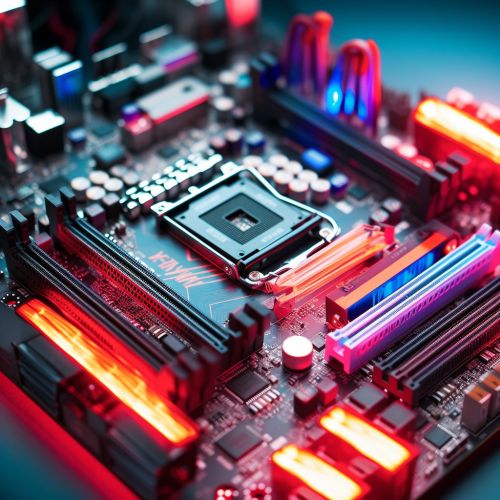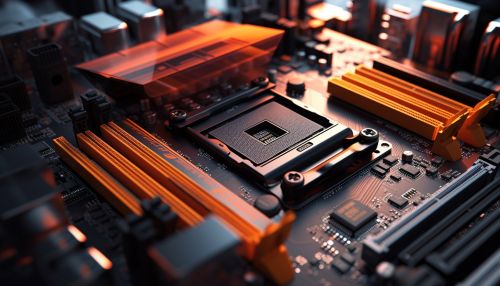Hardware
Introduction
Computer hardware refers to the physical components that make up a computer system. This includes the central processing unit (CPU), memory, input/output (I/O) devices, and storage devices. The term 'hardware' distinguishes these physical elements from the software that runs on them, which is intangible and not physically present.
Central Processing Unit
The CPU, often simply referred to as the 'processor', is the primary component of a computer that performs most of the processing inside the computer. It is often referred to as the 'brain' of the computer, as it carries out the instructions of a computer program by performing basic arithmetical, logical, control and input/output (I/O) operations specified by the instructions.
Architecture
The architecture of a CPU refers to the logical and physical structure of its components and their interconnections. This includes the instruction set, which is the set of commands that the CPU can execute, and the microarchitecture, which is the way these instructions are implemented in the CPU's circuits.
Performance
The performance of a CPU is determined by several factors, including its clock speed, the number of cores it has, and its architecture. The clock speed is the rate at which the CPU can perform instructions, measured in hertz (Hz). The number of cores refers to the number of independent processors within the CPU, each of which can execute instructions simultaneously.
Memory
Computer memory is a hardware device that a computer uses to store information temporarily or permanently. There are two main types of memory: primary memory and secondary memory.
Primary Memory
Primary memory, also known as main memory, is the area in a computer where the operating system, application programs, and data in current use are kept so they can be quickly reached by the computer's processor. The most common type of primary memory is random-access memory (RAM).
Secondary Memory
Secondary memory, also known as storage, is used to store data and programs for long-term use. It is non-volatile, meaning it retains its contents even when the computer is powered off. Examples of secondary memory include hard disk drives (HDDs), solid-state drives (SSDs), and optical discs.
Input/Output Devices
Input/output (I/O) devices are used to interact with a computer. Input devices, such as keyboards and mice, allow users to enter data and commands into the computer. Output devices, such as monitors and printers, allow the computer to communicate information to the user.
Storage Devices
Storage devices are used to store data and programs for long-term use. They can be internal, such as a hard disk drive or solid-state drive inside a computer, or external, such as a USB flash drive or external hard drive.
See Also


